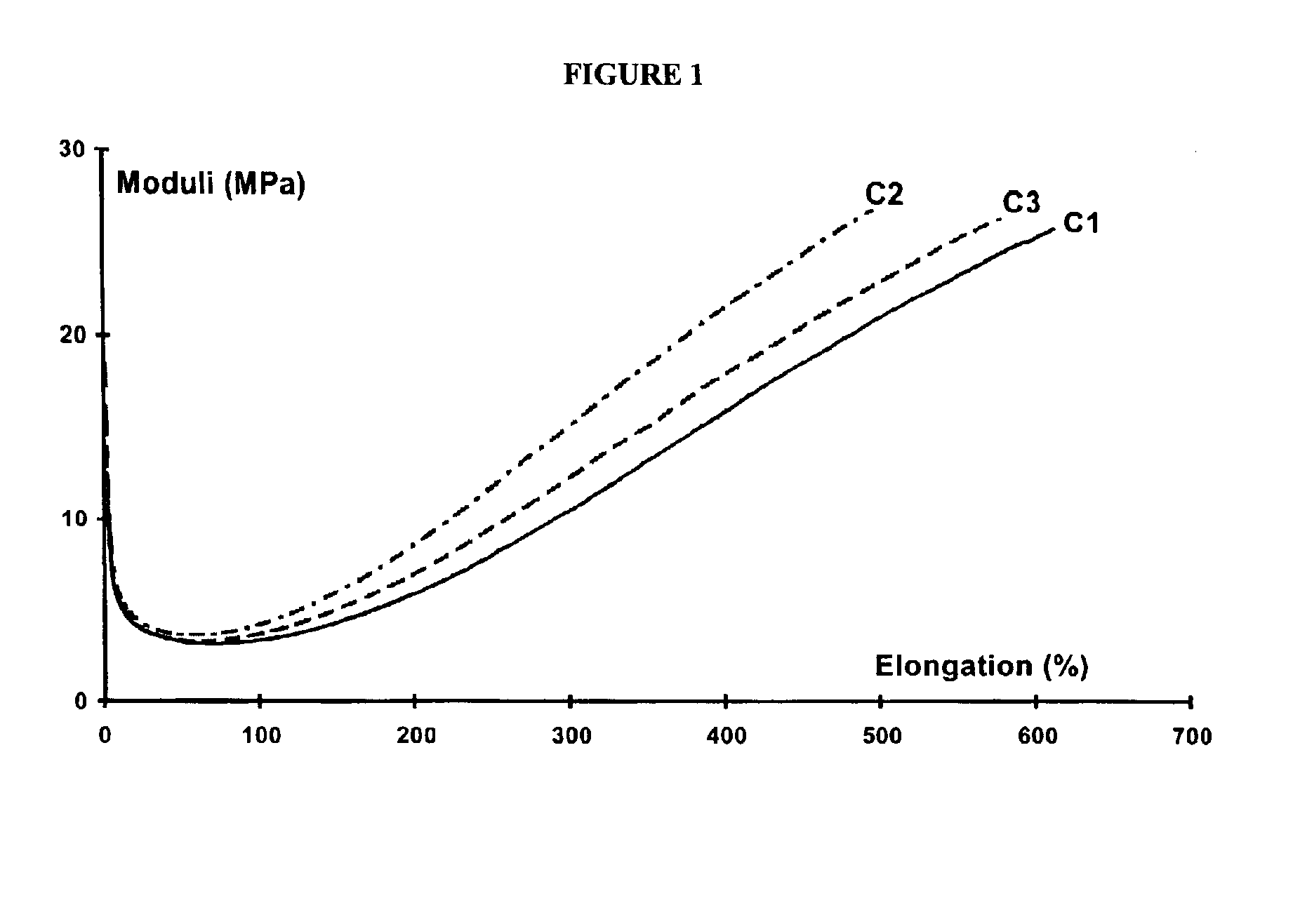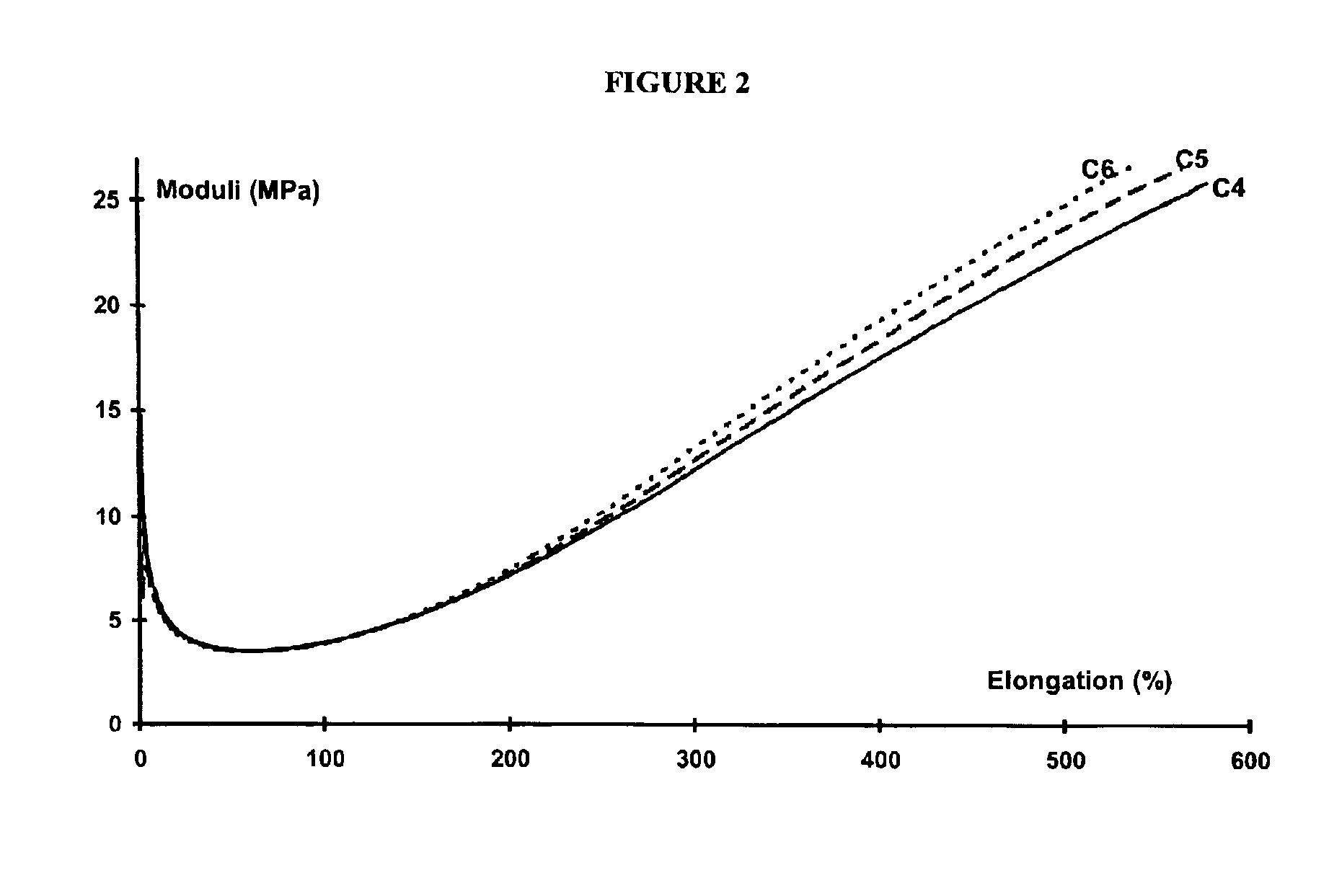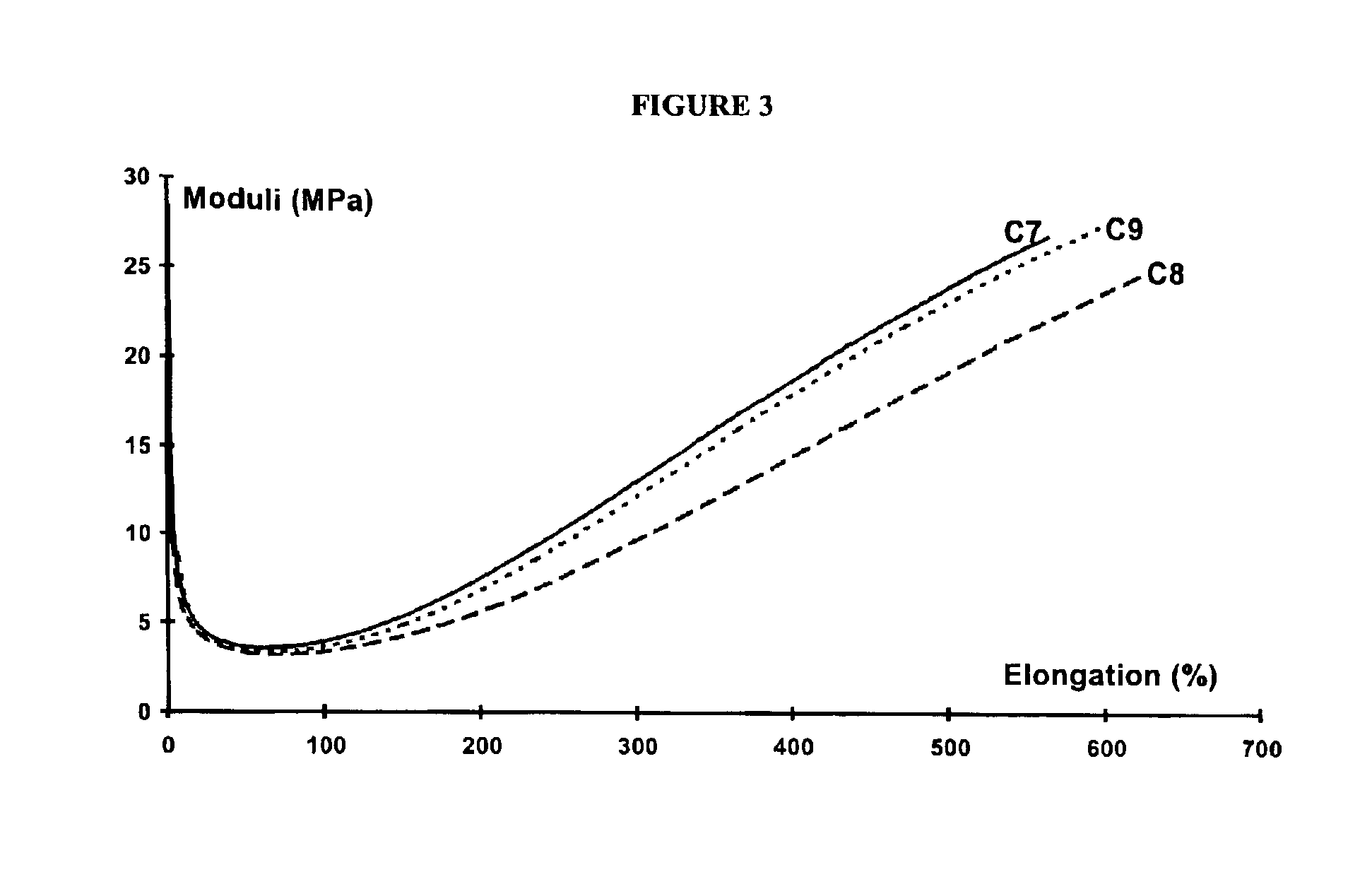Rubber composition for a tire comprising a reinforcing inorganic filler and an (inorganic filler/elastomer) coupling system
a technology of inorganic filler and rubber composition, which is applied in the direction of special tyres, transportation and packaging, non-skid devices, etc., can solve the problems of limiting the dispersibility, more difficult work, and the composition of rubber is still more difficult to process than the composition of rubber filled conventionally with carbon black, and achieves the effect of increasing the effectiveness of polysulfurized alkoxysilan
- Summary
- Abstract
- Description
- Claims
- Application Information
AI Technical Summary
Benefits of technology
Problems solved by technology
Method used
Image
Examples
example 1
Synthesis of the Aldimines
[0122]The aldimines used in the following tests were synthesized in accordance with the operating methods described below:
[0123]Compound of Formula III-1: This aldimine is synthesized from aniline and 2,4-hexadienal as follows; 100 mL (milliliters) of toluene and 27.92 g (or 0.3 mol) of aniline are introduced into a three-necked flask surmounted by an Allihn condenser system and a Dean Stark-type apparatus for recovering the water formed. The reaction medium is then stirred and heated. When the reflux temperature of toluene is reached, 28.84 g (or 0.3 mol) of 2,4-hexadienal is added using a dropping funnel. After two hours, 5.1 mL of water have formed and the reaction is stopped. The solution is then concentrated on a rotary evaporator, without exceeding a temperature of 50° C. in order not to degrade the product obtained. The latter is a very viscous liquid, dark brown in color, the majority constituent of which is the expected compound of formula III-1, a...
example 2
Preparation of the Rubber Compositions
[0128]For all the following tests, two thermomechanical stages are used which are separated by a cooling phase, in the following manner.
[0129]There are introduced into an internal laboratory mixer (0.4 liters), of the “Banbury” type, filled to 70% and the initial tank temperature of which is approximately 60° C., in succession the elastomer(s), approximately one minute later, ⅔ of the reinforcing inorganic filler and its associated coupling system, one minute later still, the rest of the reinforcing filler, its associated coupling system, and the various additives, with the exception of the antioxidant, the zinc oxide and the vulcanization system (sulfur and sulfenamide). A first thermomechanical working step is thus performed for about 3 to 4 minutes, until a maximum dropping temperature of about 165° is achieved. The elastomeric block is then recovered and cooled. Then a second stage is carried out in the same mixer with the same conditions: t...
example 3
Characterization Tests
[0133]Test 1: In this first test, three rubber compositions (mixture of SBR and BR diene elastomers) reinforced with silica, which are intended for the manufacture of treads for tires are compared. The SBR elastomer is an SBR prepared in solution and comprises 26.5% styrene, 59.5% 1-2-polybutadiene units and 23% polybutadiene trans-1-4 units. The BR elastomer comprises 93% 1-4 cis units.
[0134]These three compositions are identical except that two of them (Compositions No. 2 and No. 3) furthermore comprise a very small quantity (0.5 phr, or 7.8% by weight relative to the quantity of PSAS) of aldimine (aldimine of formula III-2 for Composition No. 2 and aldimine of formula III-3 for Composition No. 3). The amount of PSAS (TESPT) in the three cases is equal to 6.4 phr (or 8% by weight relative to the quantity of silica). Each composition furthermore comprises 1.5 phr of DPG (or about 1.9% relative to the quantity of silica). The amount of coupling system according...
PUM
| Property | Measurement | Unit |
|---|---|---|
| Temperature | aaaaa | aaaaa |
| Temperature | aaaaa | aaaaa |
| Temperature | aaaaa | aaaaa |
Abstract
Description
Claims
Application Information
 Login to View More
Login to View More - R&D
- Intellectual Property
- Life Sciences
- Materials
- Tech Scout
- Unparalleled Data Quality
- Higher Quality Content
- 60% Fewer Hallucinations
Browse by: Latest US Patents, China's latest patents, Technical Efficacy Thesaurus, Application Domain, Technology Topic, Popular Technical Reports.
© 2025 PatSnap. All rights reserved.Legal|Privacy policy|Modern Slavery Act Transparency Statement|Sitemap|About US| Contact US: help@patsnap.com



